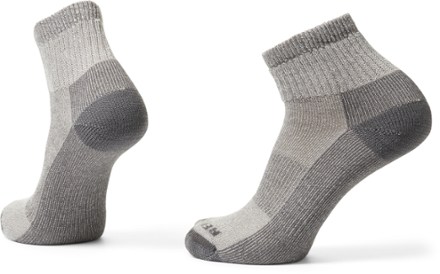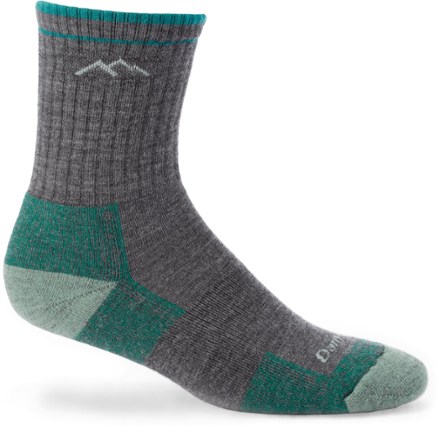
How to Choose Sleeping Bags for Camping
To enjoy a blissful night's slumber in the woods, you need the proper gear. That starts with selecting the right sleeping bag. The good news for car camping is that you don't have to fret about weight or having to fit your bag in a pack, so you can go as plush or roomy as you'd like.Shop Camping Sleeping BagsWhat's the difference between a camping and a backpacking sleeping bag? In general, camping bags offer plenty of room to move around in, while backpacking bags are light and snug. If you'll be using one bag for both activities, choose a backpacking style because you need it to be lightweight if you're going to carry it in a pack. Read How to Choose Sleeping Bags for Backpacking to learn more about bags for the backcountry.Understanding Sleeping Bag Temperature RatingsBecause you can always unzip a bag that feels too warm, you should pick a sleeping bag with a lower temperature rating than the lowest nighttime temperature you expect where you plan to camp. If you will use your bag into the colder months of the year, look at bags that can handle lower temperatures:Bag TypeTemperature Rating (°F)Summer Season+30° and higher3-Season+15° to +30°Winter+15° and lowerAll this said, be aware that temperature ratings, which are based on an "average sleeper," mainly allow you to compare bags to one other. A wide range of other factors affect how you'll really feel once you're outdoors: your sleeping pad, what you wear sleeping, humidity and wind, your metabolism and more.Choosing a Sleeping Bag ShapeIn general, campers want bags that offer ample room to stretch out and roll over, which is why so many camping bags have a simple rectangular design. It's hard to predict if you feel a bag is roomy enough without zipping yourself inside a bag. So, it's a good idea to go to an REI store to "try on" different bags to see which bag styles feel most comfortable to you. Sleeping bags come in three basic shapes:Rectangular: These bags allow plenty of room for both legs and arms to stretch out; some can be completely unzipped and used like a comforter.Semirectangular: Also known as a "modified mummy" or "barrel" shape, this designation covers a variety of shapes, all of which offer a compromise between warmth and roominess.Mummy: In order to boost warmth and cut weight, this bag style has a snug fit—you roll over with your bag rather than inside of it.Double bags: Bags made for two are the best bet for couples who plan to sleep together. Another option is to choose rectangular bags designed for zipping together—the bags need to be the same model and brand. A few bags also can be zipped together if one person chooses a right-hand zip and the other a left-hand zip.Kid-size sleeping bags: These are simply shorter, smaller and more affordable variations of adult sleeping bags.Choosing a Sleeping Bag Insulation TypeThe big choice here is whether you want a bag that's insulated with down fill or synthetic fill. Below is a rundown on the benefits of each insulation:Insulation TypeKey BenefitSynthetic InsulationAffordableContinues to insulate when dampDries fastNon-allergenicDown InsulationLightweightPerforms well in cold, dry weatherOften has a water-resistant treatment to protect it in damp conditionsCompresses small for easy packingIs durable—it retains loft and warmth well over the yearsA note about ethical down: Most brands take steps to monitor the treatment of ducks and geese that provide down. You can identify a bag from one of those manufacturers when you see it labeled as either RDS (Responsible Down Standard) or TDS (global Traceable Down Standard). To learn about what goes into those standards, read Animal Welfare and Outdoor Gear.Additional Sleeping Bag FeaturesSleeping bag shells: The outer fabric, which is made of either a durable polyester or nylon, has a durable water repellent (DWR) finish to protect the insulation inside the shell from dampness. Inside the bag, you'll find materials with a soft, warm texture.Sleeping bag hood: A snug-fitting hood can make a bag much warmer, so you're more likely to find hoods on bags with lower temperature ratings.Zipper features: Getting a bag with more than one zipper slider makes it easy to adjust ventilation. In addition, some bags prevent zipper snagging by shielding the zipper with a guard along its full length; others tackle the issue with a cover of the zipper itself.Stash pocket: A few bags offer a handy zippered stash spot for things like a watch or lip balm.Sleeping Bag AccessoriesStuff sack: A sleeping bag stored in a stuff sack will take up less space when you stow it in your vehicle.Storage sack: Leaving a bag permanently smooshed inside its stuff sack is hard on the insulation, so a lot of bags also come with a large mesh or cotton storage sack for long-term storage.Sleeping bag liner: Slipping a soft sleeping bag liner inside your bag helps keep it clean and adds extra warmth when needed. Camping in hot weather? Skip the bag and just sleep in the liner.Shop Sleeping Bag AccessoriesRelated ArticlesSleeping Bag CareHow to Store a Sleeping BagHow to Wash a Sleeping BagSleeping Pads: How to ChooseSleeping Bags for Backpacking: How to Choose




